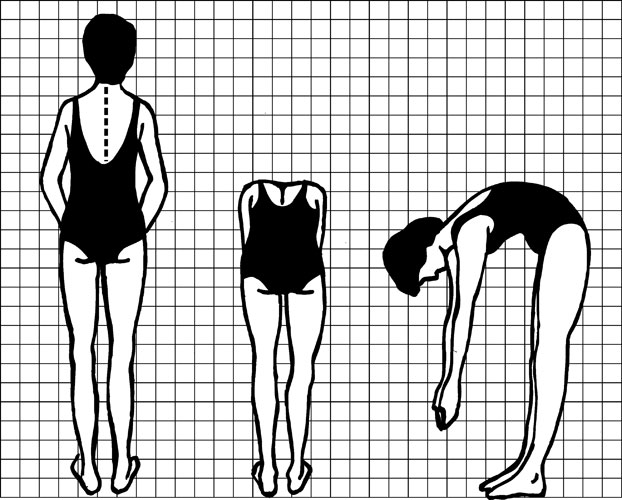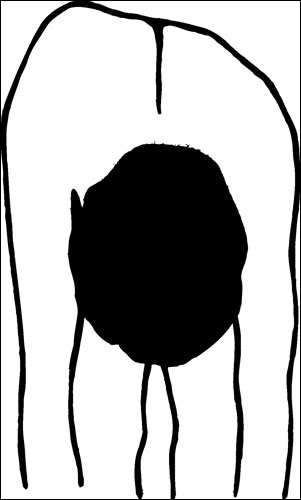Scoliosis
The normal spine has three curves – one in the neck, one in the upper back and one in the lower back.
You can see these curves from the side, but when you look at someone from behind, their spine should look straight. If the spine has a sideways curve, this is scoliosis (sco-li-o-sis).
- About 1 in 15 girls develop some scoliosis during their growing period, from about 9 to 14 years. In most cases the curve is mild and does not need treatment.
- Scoliosis is less common in boys.
- Only about 3 in 1000 children have curves large enough to need treatment.
What causes scoliosis?
We don’t know the cause of most scoliosis, although female scoliosis tends to run in families. When we can’t find a cause of it, it’s called idiopathic scoliosis.
In a few children, other problems can cause the spine to bend sideways, such as a muscle spasms or an injury to the spine, unequal leg lengths, or problems with muscle control (such as cerebral palsy). If we can treat these causes, the scoliosis will go away.
Signs of scoliosis
- Ask the child to stand up straight, with feet together and arms hanging by their side (Position 1). Stand behind and look at their back.
- Is one shoulder higher than the other?
- Is one shoulder blade higher or does it stick out more than the other?
- Does one hip stick out more than the other?
- Ask them to bend forward with their legs straight so that their hands are near to their feet (Positions 2 & 3). Look from front, back and side.
- Is one side of the back higher than the other?

- Sometimes with scoliosis, one side of the back may be higher at the top of the back, and the other side may be higher in the lower back.

The forward bending test.
- If you see any of these signs, the child should see a doctor, who will check and x-ray them if they think your child needs to be referred to a specialist.
- If the scoliosis is more than a mild curve, your child will have x-rays every few months to measure the curve and see if it’s getting worse and needs treatment. In some cases your doctor may recommend treatment straight away.
Treatment for scoliosis
- Most scoliosis is very slight and needs no treatment.
- The earlier it is detected, the better the long-term result.
- Your doctor will watch small curves while your child is growing to see if they get larger. Most don’t get large enough to need treatment.
- If the curve is large or getting larger and treatment is needed, the results are very good, especially when the curve is found early.
- In most cases, your child will need to wear a spinal brace. These are worn almost all the time under clothes for several months.
- In a few cases, your child may need an operation.
- People with scoliosis need to exercise normally and stay fit for their general health and wellbeing.
- Physiotherapy and chiropractic treatment cannot cure scoliosis.
- Untreated severe scoliosis can cause back pain and breathing problems.
More information
Last reviewed: 28-05-2019
Acknowledgements
Child and Adolescent Health Service – Community Health (CAHS CH)
This publication is provided for education and information purposes only. It is not a substitute for professional medical care. Information about a therapy, service, product or treatment does not imply endorsement and is not intended to replace advice from your healthcare professional. Readers should note that over time currency and completeness of the information may change. All users should seek advice from a qualified healthcare professional for a diagnosis and answers to their medical questions.